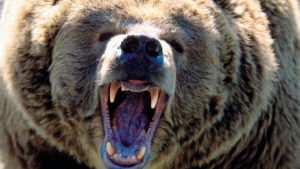Tim Boreham’s 20 ASX stocks that are primed to run in 2023 – Part 2

Usain Bolt of Jamaica competes in the Men's 100 meter semifinal on Day 9 of the Rio 2016 Olympic Games. (Photo by Cameron Spencer/Getty Images)
Tim Boreham is one of Australia’s best-known small-cap share analysts and business journalists. He has more than 30 years of experience writing for major business publications.
After a rickety year dominated by the interest rate rises we had to have, your fearless columnist is dusting off his dartboard and calibrating his crystal ball for another stab at share tipping glory.
Light up your world
Most investors are familiar with the $440 million market cap Beacon Lighting Group, but mention FOS Lighting (ASX:FOS) and the response would be FOS who?
With a $10 million market cap the manufacturer and distributor of LED lighting remains in the shadows of the ASX, but it deserves kudos for paying a dividend in its first year of listing.
Founded only in mid 2019, FOS has grown (via acquisition) to $20 million of annualised sales and aims to get to $50 million.
In November the company acquired the Sunshine Coast based Hawko Lighting for around $1.3 million, funded by a $1.5 million placement. Listed investor Hancock & Gore chipped in $1 million and owns just under 17 per cent of FOS.
FOS reported $13.5m of revenue in 2021-’22, up 66 per cent with a net profit of $350,000 and operating cash flow of $700,000. This enabled a half a cent maiden dividend to be dispensed.
Servicing the non-household sectors, FOS cites $6.2 million of orders on hands and $60m of “active quotes”.
Smells nice
One would have thought that $50 scented candles would be the first things off the shopping list in these straitened times, but there’s still a pleasant aroma enveloping this purveyor of waxed lighting devices as well as diffusers and bath bombs.
At its late November AGM Dusk Group (ASX:DSK) reported sales of $40.5 million for the first 19 weeks of the current financial year, up 24 per cent year on year. Margins are also robust.
Dusk’s current-year performance will have been shaped pre-Christmas, when tardy yuletide shoppers were dashing to find an easy prez for a distant relative (or, dare we admit, one’s spouse).
Shaw Stockbroking forecasts $134 million of sales for the 2022-’23 full year, with a net profit of $14.3 million (22 per cent below the very strong 2021-’22 year). Having almost halved in value in 2022, the stock pays a 10 per cent fully franked yield and trades on a multiple of under eight times.
Primed for lift-off
With a $50 million market cap and a solid five-year growth record, Prime Financial Group (ASX:PFG) is a value entry into the burgeoning accounting, wealth management and business advisory sector.
Prime managed $26 million of revenue in 2021-’22, up 18 per cent with a 24 per cent net profit boost to $3.8m. A 1.1 cent full-year dividend was proclaimed.
Management is targeting $50m of revenue within three years, through organic and inorganic initiatives. The latter includes October’s acquisition of Intello, a Queensland based SMSF administrator, for $4.6 million.
Prime’s ASX peers include the $224m market cap chain Kelly Partners Group (ASX:KPG), which we also like – and the $220 million Fiducian Group.
Weigh to go!
From the smouldering remains of the bombed-out tech sector we pluck out the Israeli based Shekel Brainweigh (ASX:SBW), which is doing some interesting things with smart weighing systems for next-gen retailers.
By next-gen we mean increasingly frictionless (non-contact) self-checkouts and smart trolleys with embedded product identification, weighing and payment terminals.
In retailing’s brave new world, we’ll walk out of a store with a bag of goods and not be arrested, because smart sensors have captured our purchases and debited our accounts already.
Shekel Brainweigh posted June (first) half revenue of $US13 million, 23 per cent higher with the loss improving to $2.03 million from $2.77m previously.
In mid December the company guided to record December quarter revenue of $US7.5 million, with as somewhat vaguer promise of moving towards break even.
Research-as-a-Service ascribes a ‘base case’ valuation of 37 cents a share – more than four times the stock’s current worth – with an estimated 2022 loss of 2.4 million morphing into a $1.9 million profit next year.
Biotechs about to bounce*
As with tech stocks, the biotech sector has been smashed globally and many of the valuations don’t add up.
A case in point is Dimerix (ASX:DXB), which us in phase III trials across 70 clinical sites for its lead compound DMX-200, to treat the rare kidney condition focal segmental glomerulosclerosis (FSGS).
Spanning 12 countries, the trials focus on reducing the amount of protein in the urine – proteineuria – which is a sure sign the old spuds aren’t working as well they should be.
The phase II study showed a circa 17 percent reduction, plus a further 15-20 percent from the standard-of-care drug.
Phase III results are due by mid next year.
If the trial succeeds, Dimerix has an approval pathway into the $US2.5 billion a year kidney disease market.
For the more skin-deep problems – so to speak – Botanix (ASX:BOT) is a value play as it awaits expected US Food & Drug Approval for its compound sofpironium bromide, to treat primary axillary hyperhidrosis (excessive sweating).
Management is – er – sweating on a decision, expected in the September quarter of 2023. In the meantime, Botanix also has advanced programs for rosacea, dermatitis and acne.
With a circa $70 million market capitalisation and a sub one cent share price, Botanix, like Dimerix, is being priced to fail.
Launching 4D Medical’s (ASX:4DX) world first dedicated four-dimensional lung scanner in March, health minister Greg Hunt dubbed the company as the next CSL, Cochlear or ResMed.
Given Hunt’s government was deposed shortly thereafter, we’re not sure that’s a good omen. But with its ability to detect ventilation levels in different parts of the lung, the XV LVAS device takes disease diagnosis to a new level.
While generating only modest revenue to date, 4D Medical’s imaging has been adopted by I-Med, Australia’s biggest imaging chain.
4D Medical’s greater prospects lie with diagnosing the 3.5 million US military personnel who have served in the Middle East since the 2001 and have returned with serious lung problems.
And if the best efforts of the life sciences sector fails, Propel Funeral Partners (ASX:PFP) is much smaller than its listed counterpart Invocare (IVC). But when it comes to performance over the last five years it’s no dead heat – Propel wins easily.
When it’s all too hard …
2022 was an onwards-and-upwards year for exchange traded funds (ETFs), which emulate the movement of a particular sector, commodity, currency or bond market.
According to Global X (formerly ETF Securities), there no fewer than 285 ASX-listed ETFs with more than $130 billion of funds.
Gold and battery metal themed stocks proving especially popular, but given the cornucopia of choice, we’re reluctant to mention particular offerings.
Having said that, those who believe the Covid hangover has only just begun should look at Betashares Australian Equities Bear Hedge Fund (BEAR), which delivers a 0.9 per cent to 1.1 per cent gain if the market falls 1 per cent.
Or for those who think we truly are facing a public debt apocalypse, the equivalent Betashares ‘strong bear’ fund (BBOZ) gains 2-2.75 per cent for every 1 per cent market fall.
But we hope it won’t come to that.
Happy investing!

UNLOCK INSIGHTS
Discover the untold stories of emerging ASX stocks.
Daily news and expert analysis, it's free to subscribe.
By proceeding, you confirm you understand that we handle personal information in accordance with our Privacy Policy.








